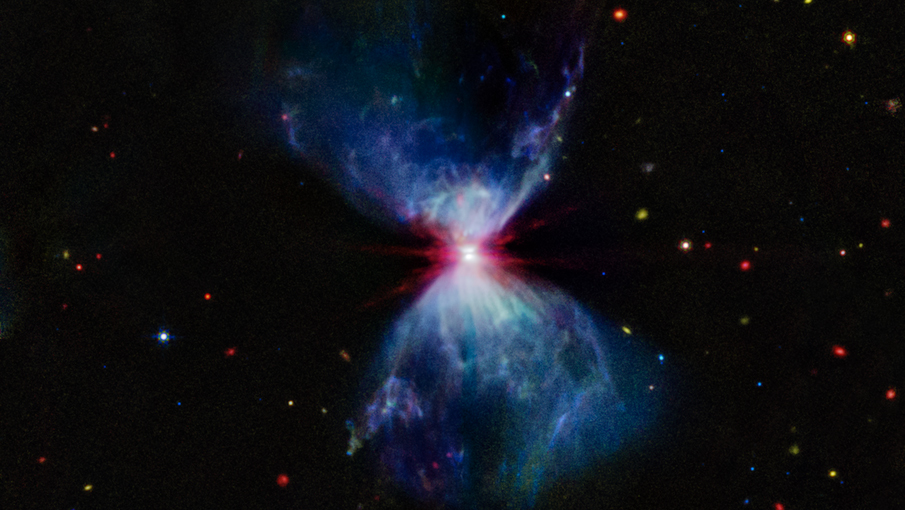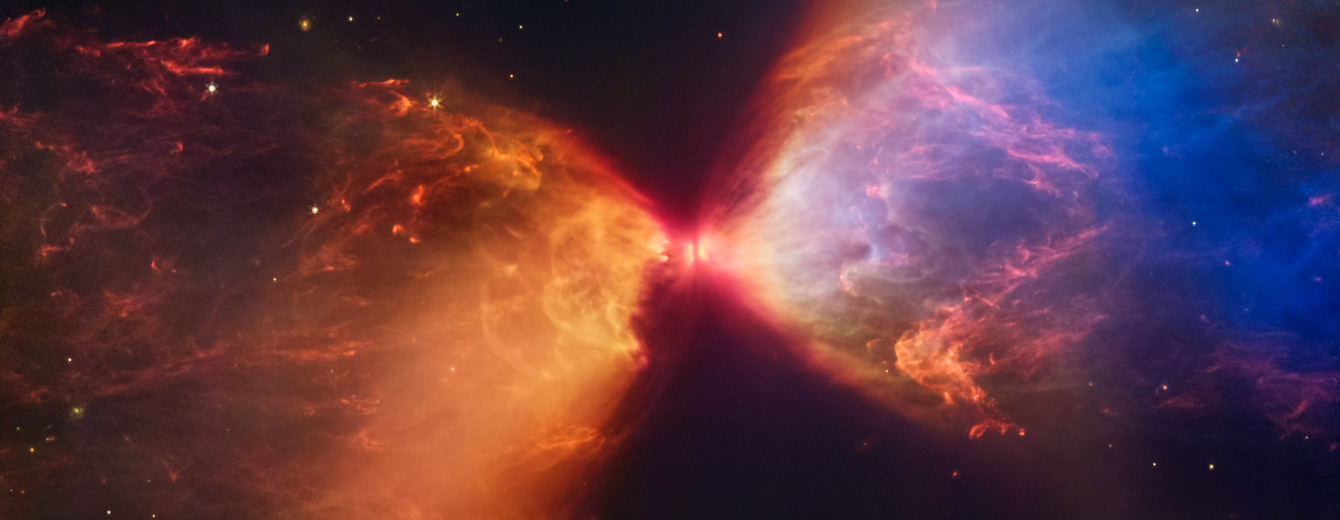
Setting the cosmos ablaze with explosions of color, the James Webb Telescope’s MIRI (Mid–Infrared Instrument) has captured this fiery scene of a very young cosmic object becoming a star.
In the neck of the hourglass shape, a central protostar, about 100,000 years old, can be seen growing, still surrounded by its parent molecular cloud of gas and dust.
The James Webb Space Telescope is “the world’s premier space science observatory,” according to NASA.
“Webb is solving mysteries in our solar system, looking beyond to distant worlds around other stars, and probing the mysterious structures and origins of our universe and our place in it.”
The image shows the effects of outflows emitted in opposite directions along the protostar’s rotation axis, as the object sucks in gas and dust from the surroundings.
NASA explains:
“These outflows take the form of bow shocks to the surrounding molecular cloud, which appear as filamentary structures throughout. They are also responsible for carving the bright hourglass structure within the molecular cloud as they energize, or excite, the surrounding matter and cause the regions above and below it to glow.”
The effect is reminiscent of a high-end New Year’s Eve fireworks display.

A protostar forms from a nebula, a massive cloud of dust and gas in space, mostly composed of hydrogen. As gravity pulls the elements together and it gets hot, the hydrogen nuclei fuse together to make helium, and a protostar is formed.
As the protostar continues to age and releases energetic jets, it will consume and destroy its molecular cloud surroundings, and many of the pretty structures we see in this image will fade.
“Eventually, once it finishes gathering mass, this impressive display will end, and the star itself will become more apparent, even to our visible-light telescopes,” explain NASA.
By analyzing two images, both from the Webb MIRI and the Webb Near–Infrared Camera (NIRCam) reveals the overall make–up and behavior of this system, including the effect the developing protostar is having on its environment.
NASA said:
“Other stars in Taurus, the star-forming region where L1527 resides, are forming just like this, which could lead to other molecular clouds being disrupted and either preventing new stars from forming or catalyzing their development.”
Take a look at our guide to the best cameras for astrophotography, the best lenses for astrophotography, and the best star tracker camera mounts for astrophotography.







